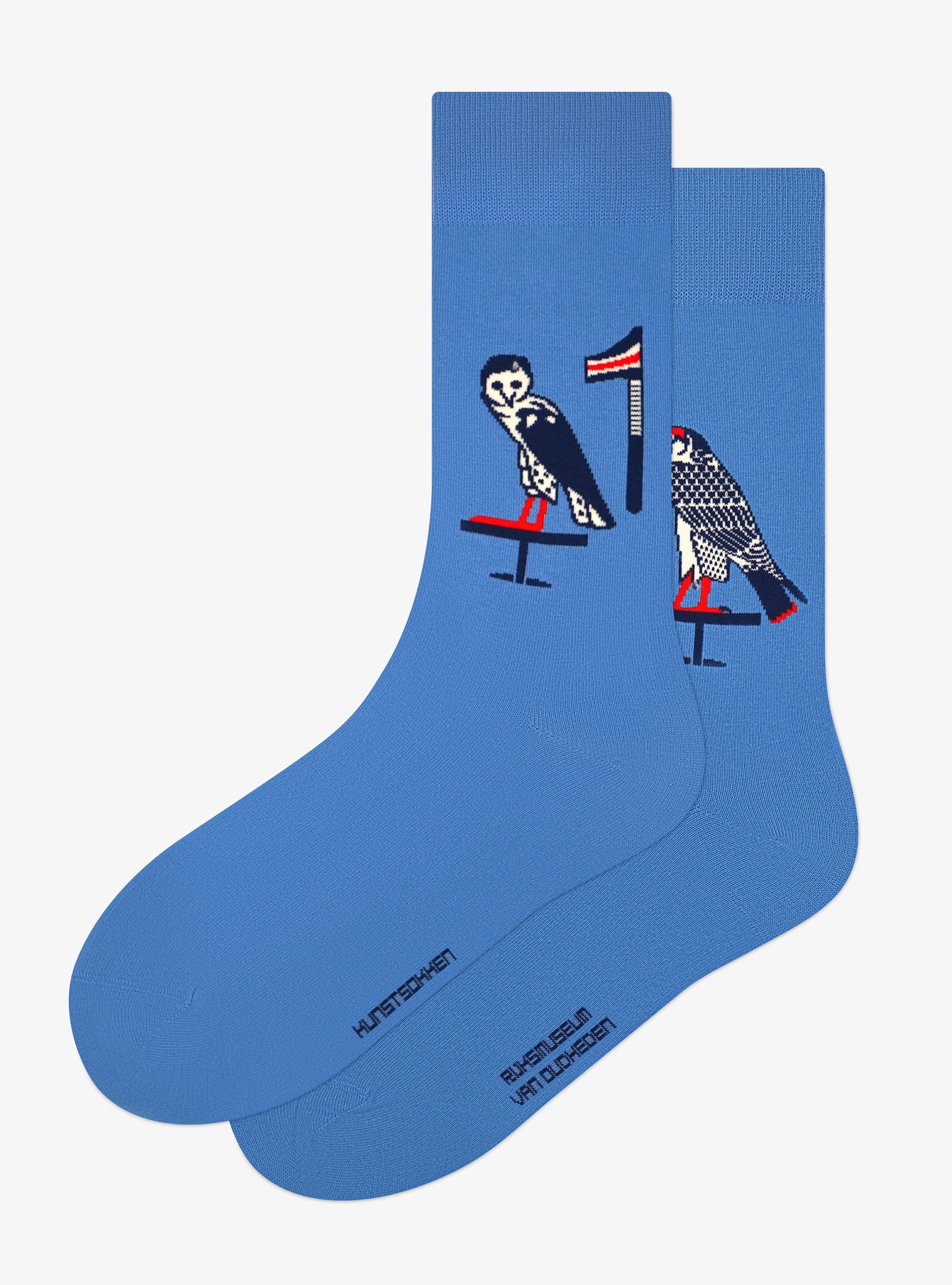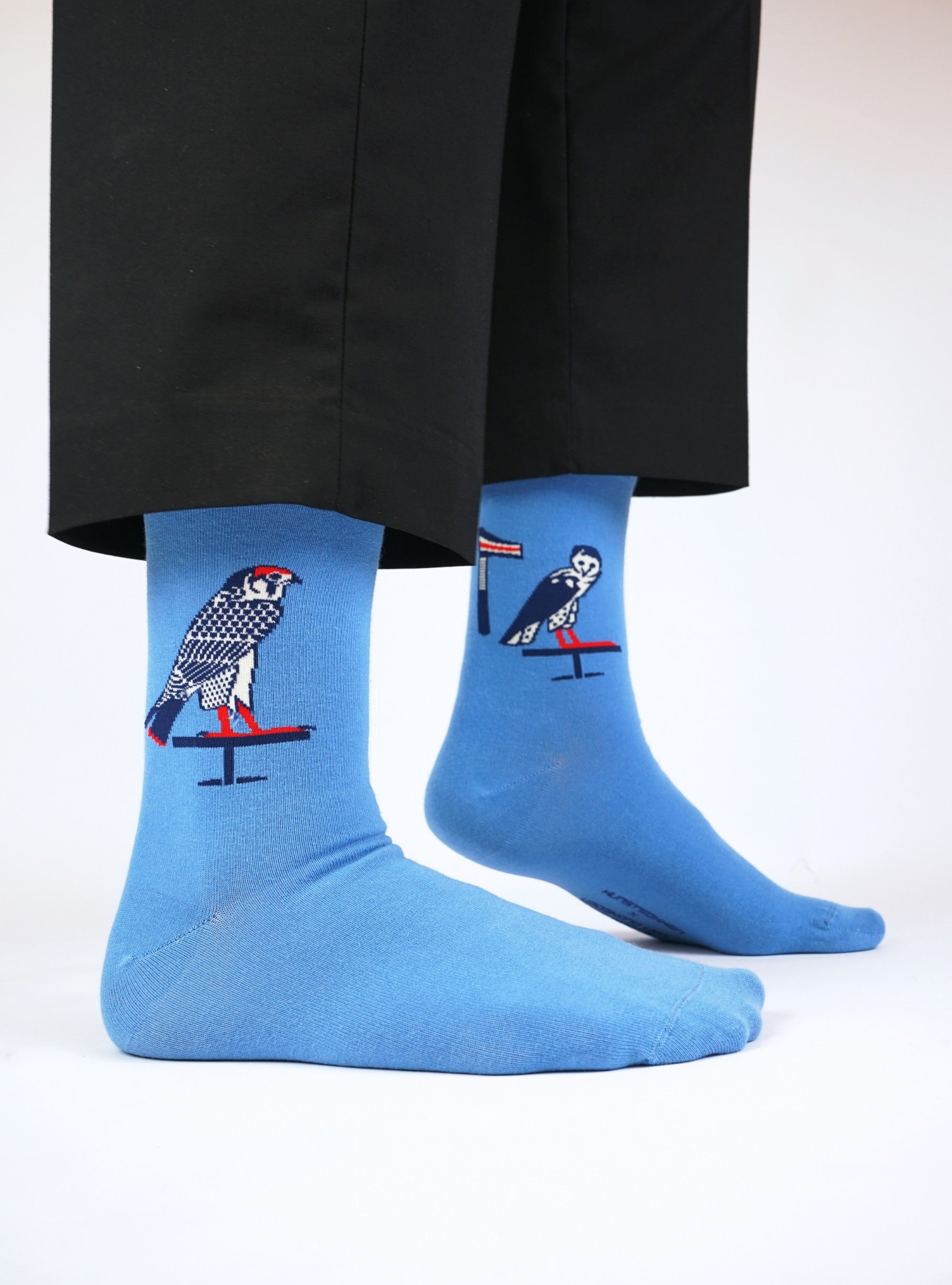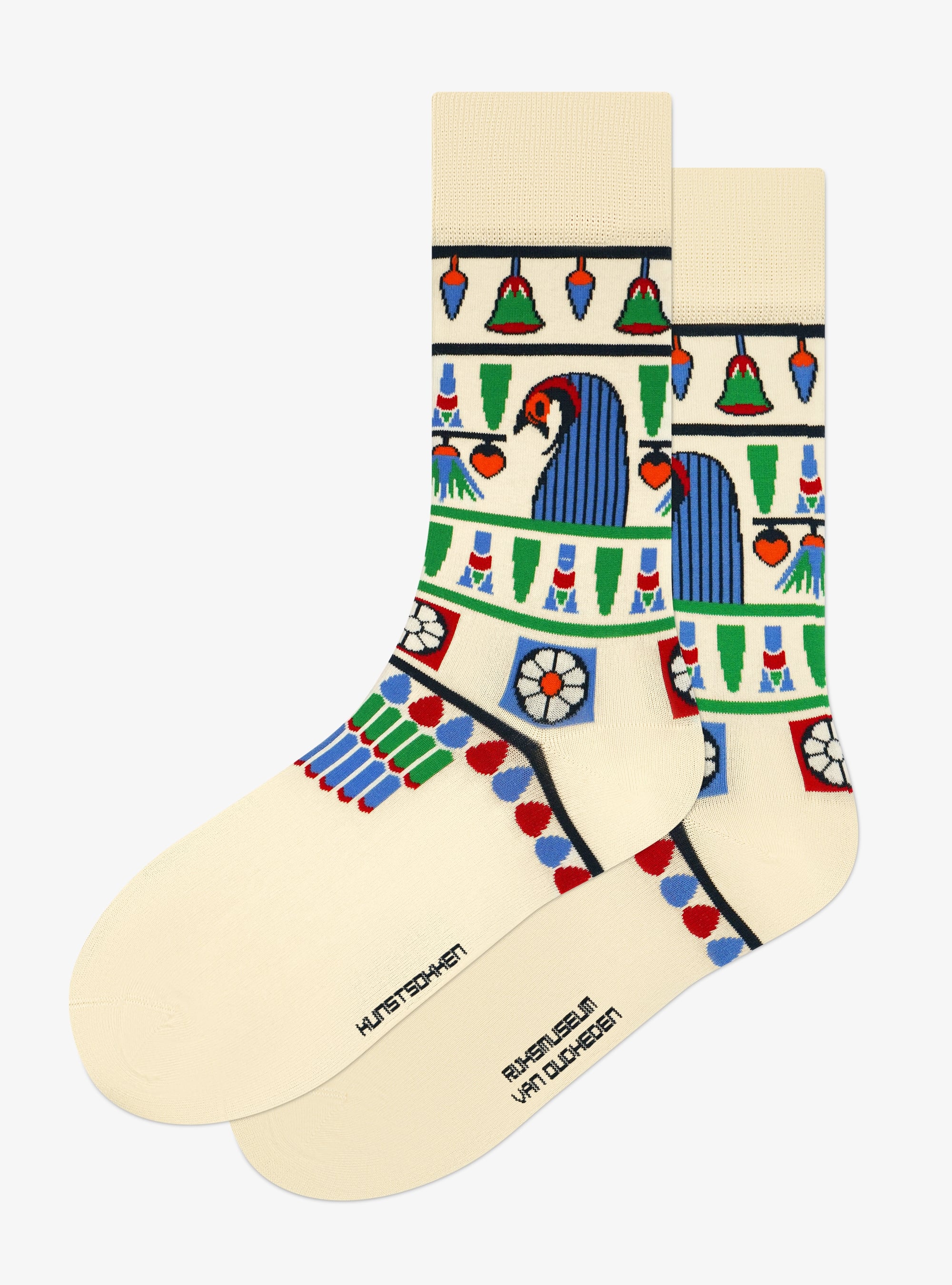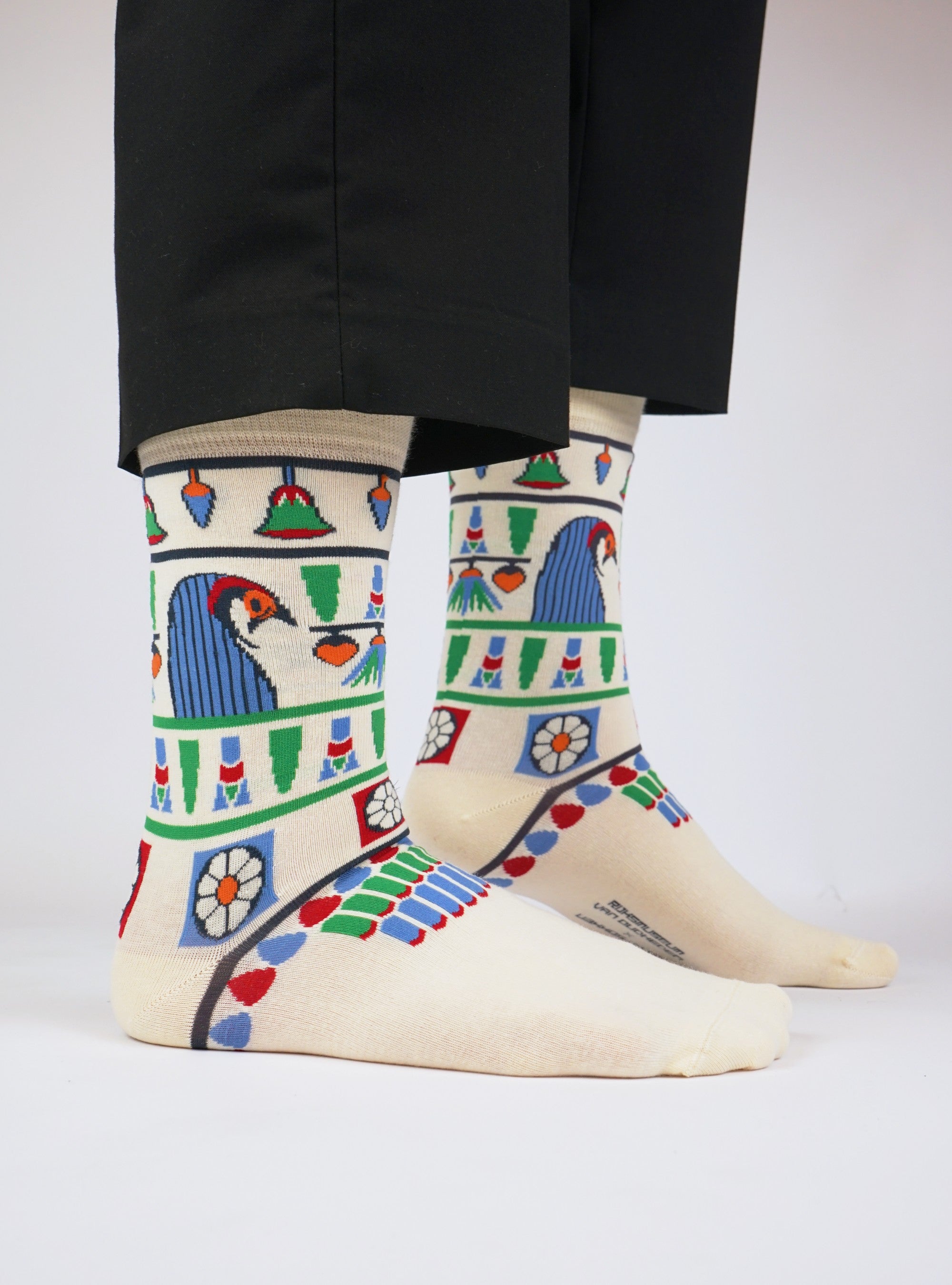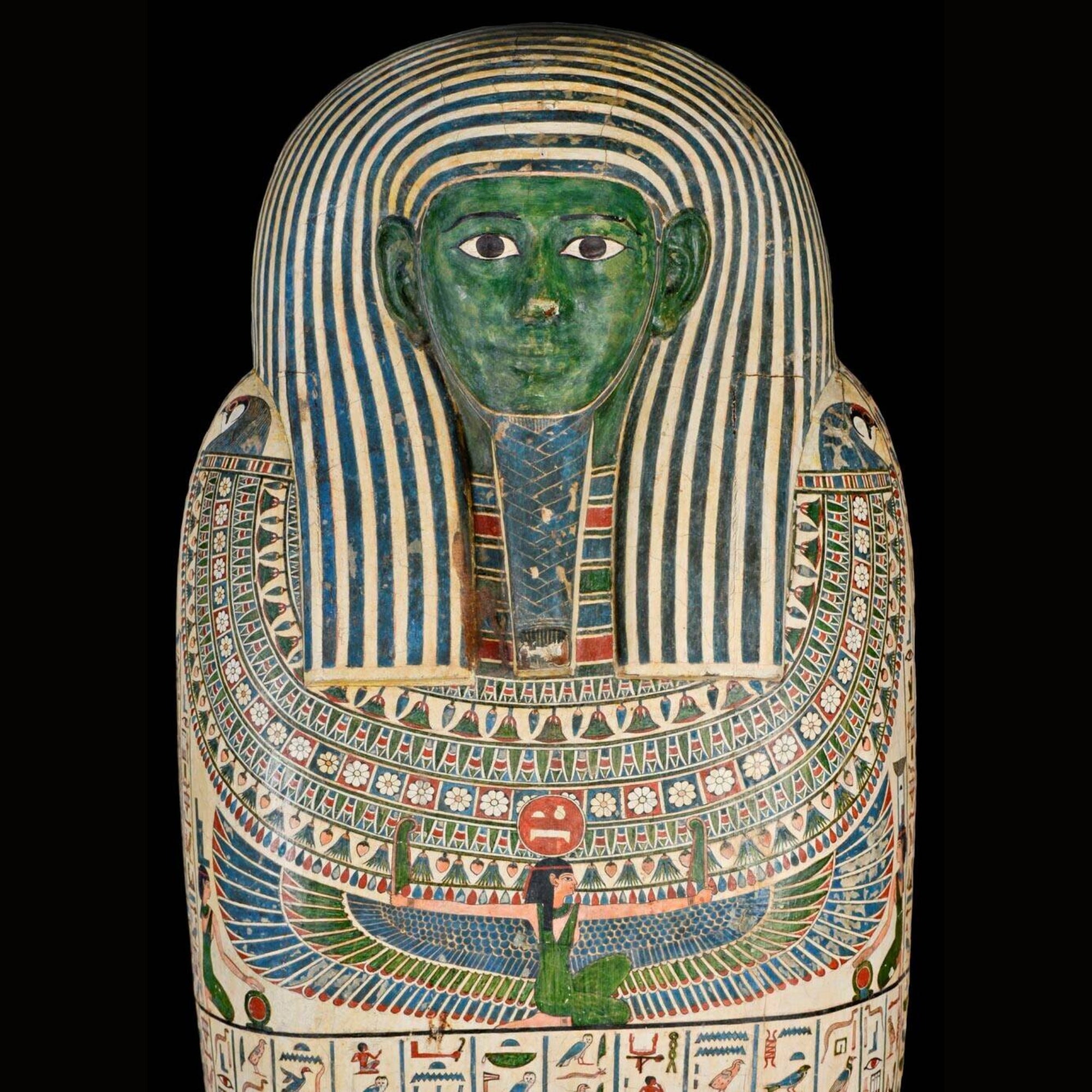
National Museum of Antiquities x Kunstsokken
A Journey That Began 2,600 Years Ago
In the silence of a museum hall in Leiden rests the sarcophagus of Peftjauneith – a temple administrator who lived around 650 BCE in ancient Egypt.
His face is painted green, the color of Osiris. Around his body: hieroglyphs, falcons, and a magnificent floral collar. Every symbol tells a story about gods, protection, and the belief that art can transcend death.
The Sons of Horus guarded his organs. Sacred birds carried messages from the gods. The broad collar around his shoulders symbolized his transition to the divine.
Now, more than 2,600 years later, we're bringing these stories back – in collaboration with the National Museum of Antiquities.
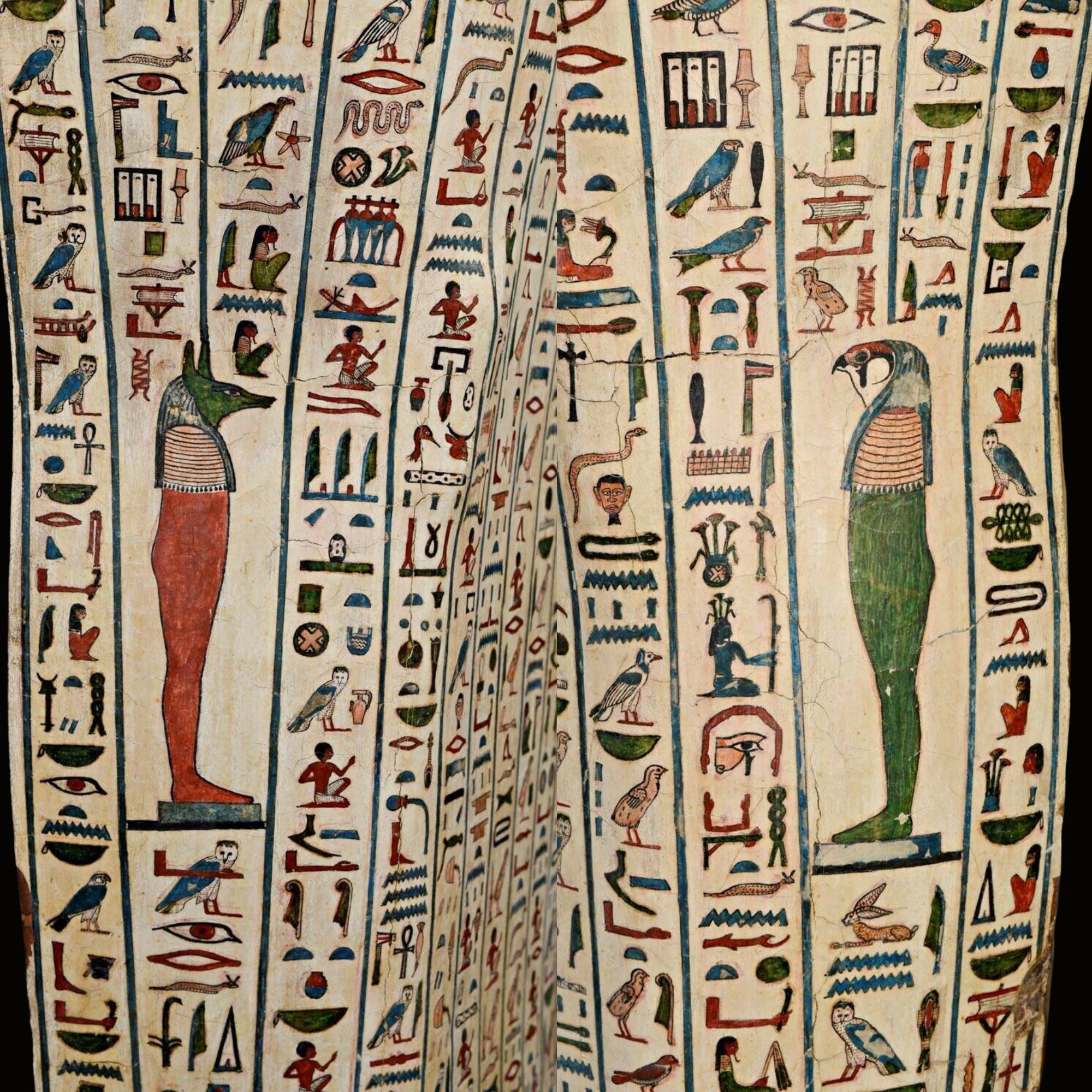
Sons of Horus
The Guardians of the Afterlife
The ancient Egyptians entrusted the most vulnerable parts of the deceased to four divine brothers – the Sons of Horus. Duamutef, with his jackal head, guarded the stomach. Qebehsenuef, with his falcon head, protected the intestines. On these socks they stand exactly as they were painted on the coffin 2,600 years ago, surrounded by hieroglyphs from the Book of the Dead – spells meant to help Peftjauneith navigate safely through the realm of the dead.
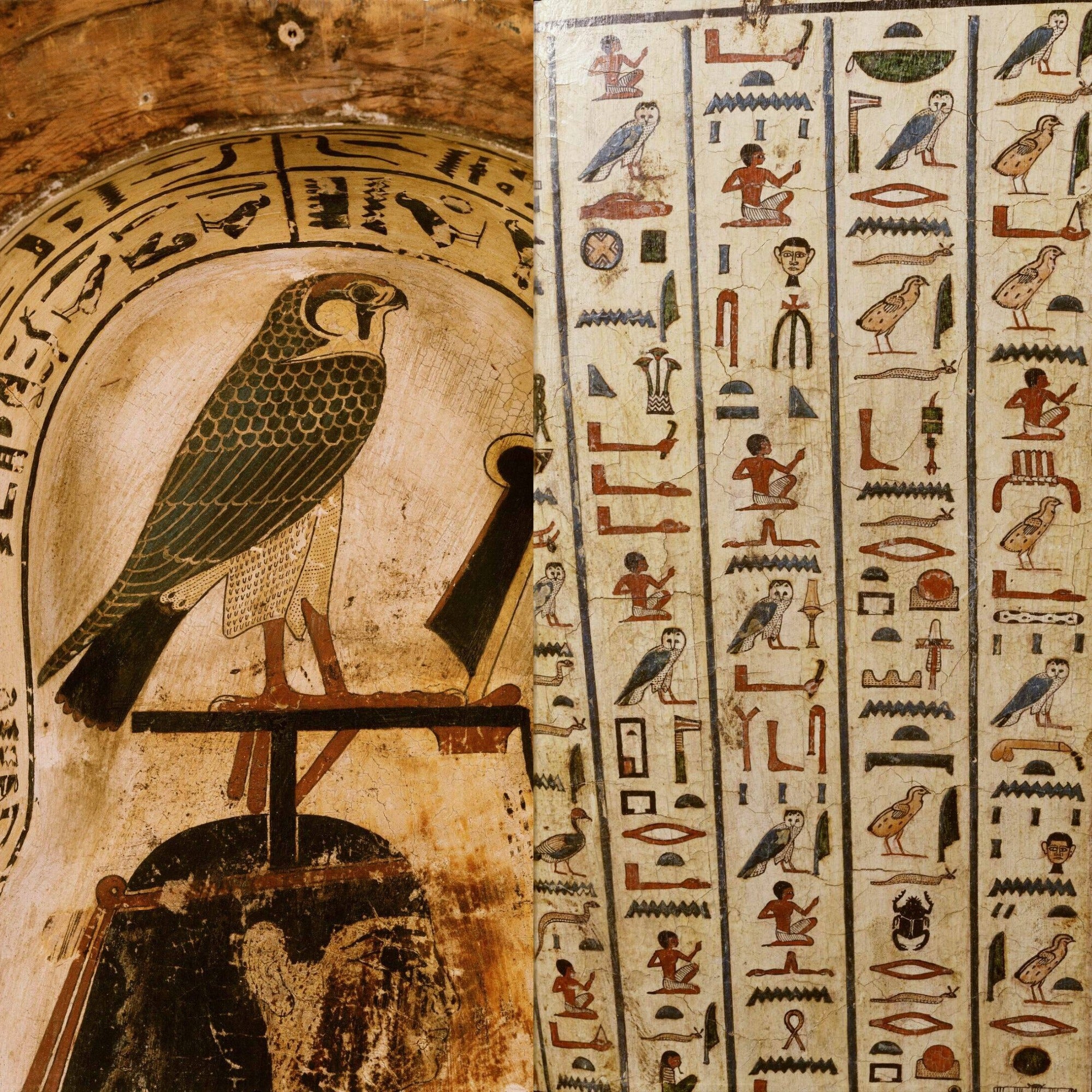
Egyptian Birds
The Language of the Gods
One bird is a god. The other is a letter. The falcon on this sock is Horus, son of Osiris and responsible for his father's funeral rituals. The owl beside it is the hieroglyph for the sound "-m", followed by a flagpole – the sign that stood at temples and was used to designate gods. Together they form part of the name of Atum, the creator god. This is how the Egyptians communicated: images were words, words were sacred.
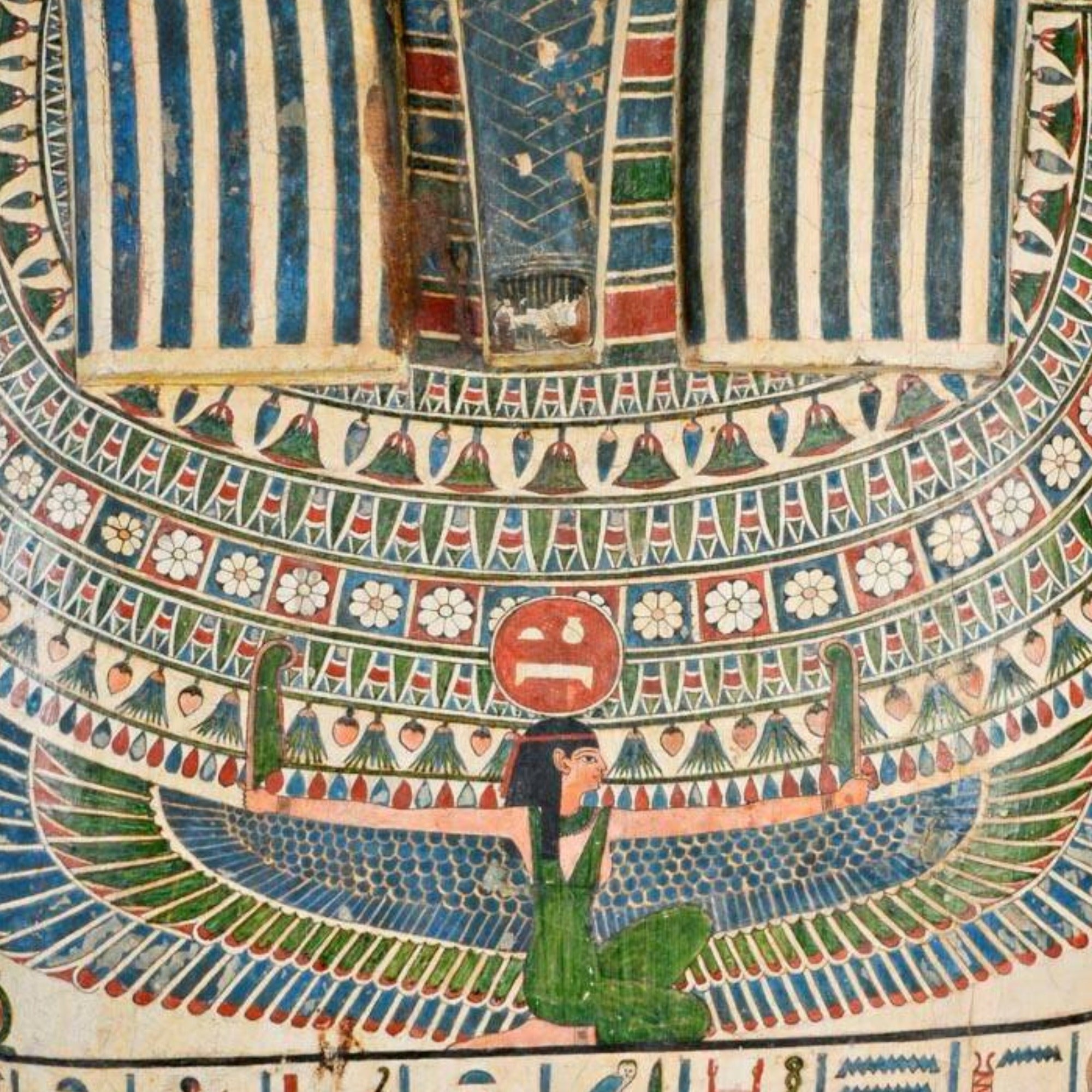
Floral Collar
The Collar That Transcends Death
The broad floral collar – 'wesekh' in ancient Egyptian – was more than jewelry. It was a protective shield that marked the transition from human to god. The falcon heads on the shoulders refer to Horachty, the sun god, or Sokar, the death god. Every layer of flowers, every geometric pattern was painted with precision as a promise: beauty protects, art conquers death. Peftjauneith wore this collar on his final journey. Now you wear the same symbols.


